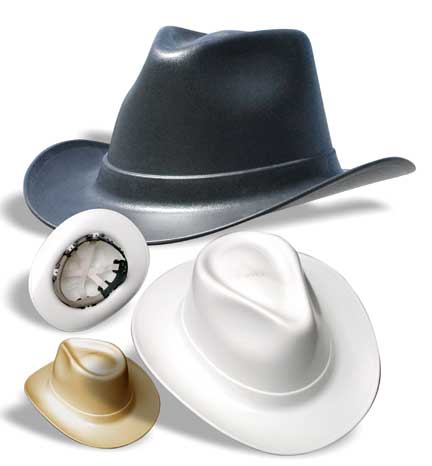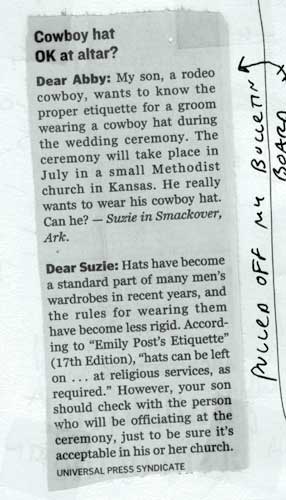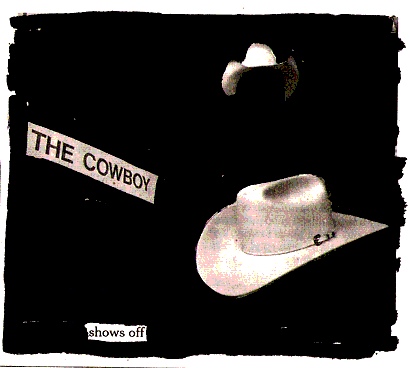Artist/cartoonist Gary Panter signed his new book and gave a slideshow presentation at Domy Books last night. My buddy Adam has the last word:
Here are some good pictures of the same event at the Houston store.
Artist/cartoonist Gary Panter signed his new book and gave a slideshow presentation at Domy Books last night. My buddy Adam has the last word:
Here are some good pictures of the same event at the Houston store.

a big / wide-open space / and a cowboy hat / but / what matters most is / the swagger
Speaking of cowboy hats: this morning at a construction site, Meg spotted a cowboy hard hat:

Also, scanned this out of an old scrapbook:

And, to finish off the theme, let’s not forget one of my first blackout poems:

I’m not so much a fan of the hats, but I definitely need some boots.
How to blog teach, write, make art:
This site participates in the Amazon Affiliates program, the proceeds of which keep it free for anyone to read.